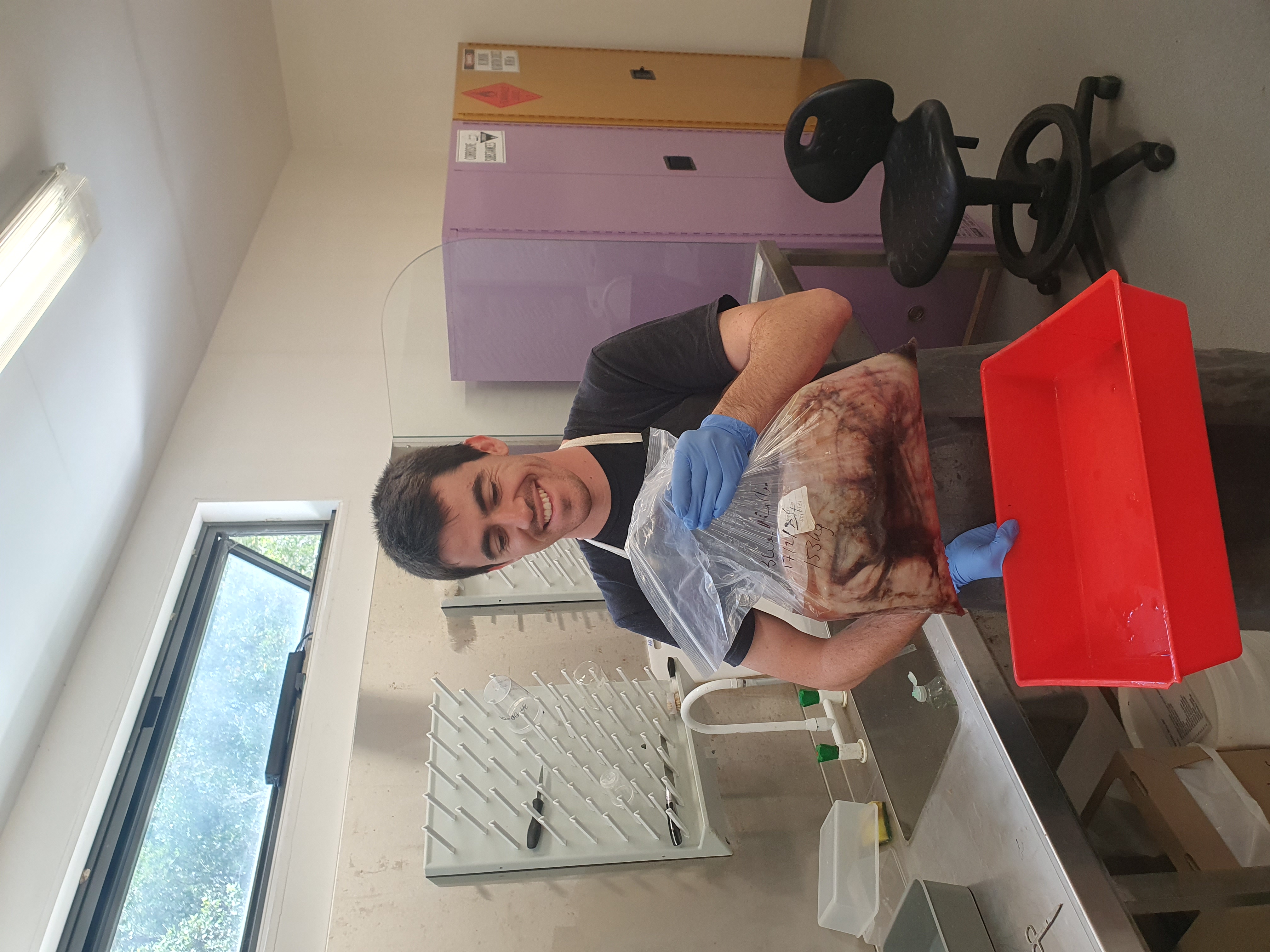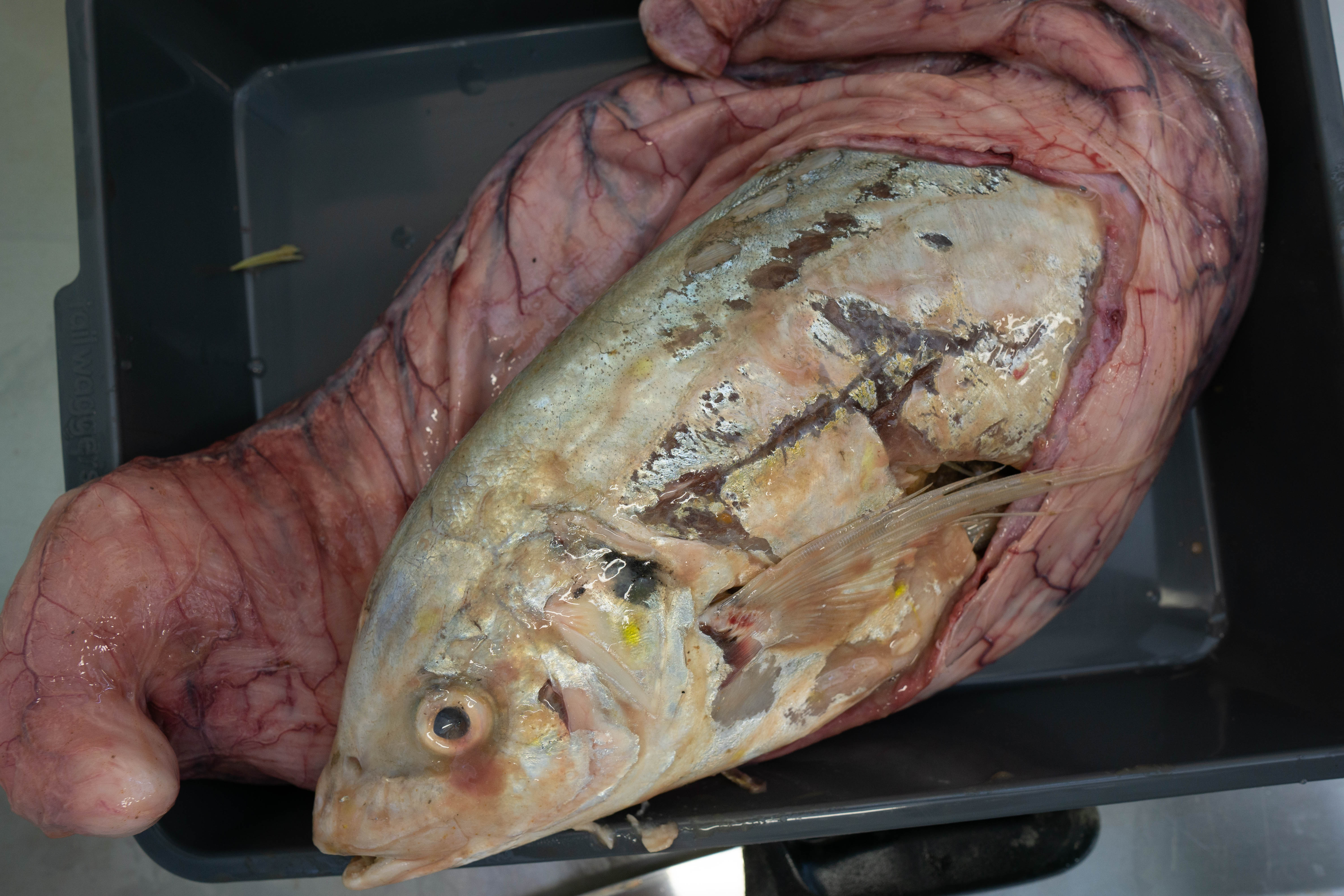Understanding the diets of apex predators like marlin is essential for their management - new research is helping to clarify their feeding habits by distinguishing primary prey from those consumed earlier in the food chain.
By Catherine Norwood
While dietary studies have identified everything from plankton and crustaceans to squid and tuna in the stomachs of marlin, not all of these are necessarily consumed directly by the marlin.
This distinction is important when it comes to developing ecosystem-based management strategies, says NSW researcher Tristan Guillemin, winner of the FRDC-sponsored 2023 Science and Innovation Award from the Australian Bureau of Agricultural and Resource Economics and Sciences (ABARES).

Tristan was awarded a grant to support his research over 12 months, allowing him to collect marlin stomach samples from fishing tournaments in partnership with the News South Wales Game Fishing Association.
“We do these diet studies to look at what is eating what, and how the whole food chain works,” says Tristan. “If you incorrectly attribute prey, and think your predator is eating five species, when it might actually be three, it can throw out ecosystem-based models and affect fisheries management. So, we need to accurately attribute what the predator is eating, and what its prey is eating.”
Marlin stomach sampling
Tristan says recreational fishers have been keen to learn more about the research and to provide samples. He keeps them updated on progress through social media channels and presentations at fishing club events.
To date, Tristan has sampled stomachs from 59 Blue Marlin (Makaira nigricans), 19 Striped Marlin (Kajikia audax) and seven Black Marlin (Istiompax indica). He was also able to sample the stomachs of 24 different relatively intact prey consumed by the marlin, which represented nine different species – mostly tuna.

Tristan employs both direct observation of stomach contents and metabarcoding—a cutting-edge method that uses DNA sequencing to identify species present in the stomach. This approach also helps identify what the prey species were consuming, even from partially dissolved samples
“We found that small crustaceans and cephalopods, such as squid, were significantly more common in ‘messy’ stomachs—those with dissolved contents—than in cleaner stomachs with whole prey items,” explains Tristan.
“This suggests that crustaceans and cephalopods likely come from secondary predation, meaning they were eaten by the marlin indirectly through their prey.”

DNA analysis revealed that deep-water fish are more commonly found in Striped Marlin diets, while Blue Marlin and Black Marlin primarily consume tuna.
Ecological implications
Tristan says changes in food availability for apex predators could have profound impacts on both our fisheries and the oceanic environment.
“Roughly 10 per cent of species we identified in the diets of Blue Marlin were attributed to secondary predation. But for some predators, it might be much higher.”
Sally Roberts, FRDC Capability & Capacity Manager, highlights the continued support for emerging researchers like Tristan, even after the conclusion of the ABARES Science and Innovation Awards.
“FRDC remains committed to building capacity and capability in the field of fisheries science through programs like AgriFutures’ Horizons Scholarships and various leadership development opportunities,” Sally said.
Related FRDC Project
2022-057: Science and Innovation Awards for Young People in Agriculture, Fisheries and Forestry





